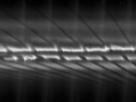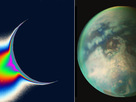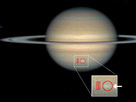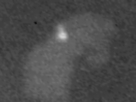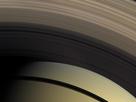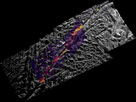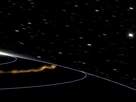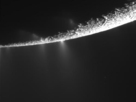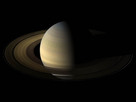Cassini
Hunting Enceladus 'Tigers' with Night Vision
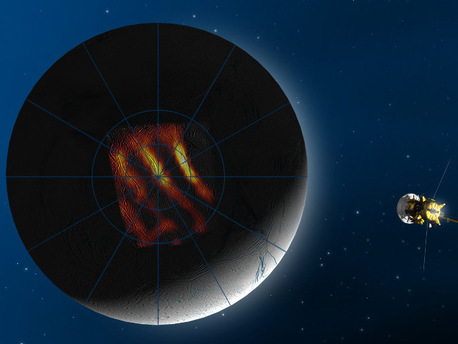 © NASA/JPL-Caltech
|
Artist's concept of Cassini's flyby of Enceladus.
The relatively high flyby allows the composite infrared spectrometer to track the tiger stripe surface smoothly throughout the flyby. That kind of coverage is more difficult at lower altitudes because the surface whooshes by very quickly.
In addition, the visual and infrared mapping spectrometer will collect data on the composition of Enceladus, and the imaging cameras will take pictures.
The Cassini-Huygens mission is a cooperative project of NASA, the European Space Agency and the Italian Space Agency. The Jet Propulsion Laboratory, a division of the California Institute of Technology in Pasadena, manages the Cassini-Huygens mission for NASA's Science Mission Directorate in Washington. The Cassini orbiter was designed, developed and assembled at JPL.
Source: NASA
Cassini
Hunting Enceladus 'Tigers' with Night Vision
 © NASA/JPL-Caltech
|
Artist's concept of Cassini's flyby of Enceladus.
The relatively high flyby allows the composite infrared spectrometer to track the tiger stripe surface smoothly throughout the flyby. That kind of coverage is more difficult at lower altitudes because the surface whooshes by very quickly.
In addition, the visual and infrared mapping spectrometer will collect data on the composition of Enceladus, and the imaging cameras will take pictures.
The Cassini-Huygens mission is a cooperative project of NASA, the European Space Agency and the Italian Space Agency. The Jet Propulsion Laboratory, a division of the California Institute of Technology in Pasadena, manages the Cassini-Huygens mission for NASA's Science Mission Directorate in Washington. The Cassini orbiter was designed, developed and assembled at JPL.
Source: NASA






